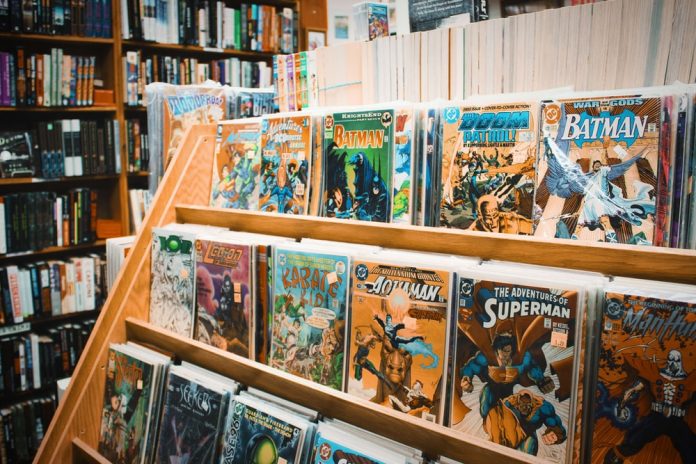
Growing up in New York City, Micheline Hess rarely saw a black person depicted in a comic book.
They were never there, she said, except occasionally in an uncomplimentary way.
Now she creates her own.
Speaking during a career education panel at Harlem’s Apollo Theater recently, Hess said her new Diary of the Mad, Black Werewolf features a story of black women werewolves “hunting and killing and eating racist people” over the course of hundreds of years.
She said she wanted to break from the corporate comic book mold to make something “angry and gory and terrible.”

Hess was one of five artists who spoke to about 100 people attending a panel called “Kapow: Careers in Comics and Graphic Novels” to encourage young people with a passion for the field to pursue it.
Alitha Martinez has spent two decades illustrating some of the best-known comic books in the world, including Iron Man, Spiderman and Black Panther.
“Superman and Wonder Woman are about the only two I haven’t touched,” she said. “I’m waiting on them.”
But doing the art for widely regarded comic books, she said, isn’t nearly as rewarding as doing independent projects of her own.
“For them, it’s just do as you’re told,” Martinez said. They give you a script, she said, and you follow it no matter how horrified you feel because that’s how you get paid.
Joseph Illidge, a longtime comic book editor, said comic books that are part of an ongoing series generally have new issues about every four weeks. To keep churning them out, he said, requires careful planning.
Generally, he said, each issue begins with a script that’s normally about five pages long with characters and a story line. Once the pitch is approved, writers typically get a few weeks to finish the story, Illidge said.
Then it moves on to an artist who draws it in pencil on paper or, more likely, on a computer. Then it goes to an inker who darkens the lines, he said, followed by captions and word balloons.
Only does the colorist step in, he said, to produce the final package, usually 20 to 24 pages long.
A lot of teamwork and cooperation goes into producing each issue, Illidge said, not even counting the production side of it.
Martinez said she’s a big fan of superheroes, especially ones who fight.
She’s not keen on the way so many of them have become “all emo” in recent years, getting away from the action that used to define them.
For instance, she said, “I drew Wolverine and I didn’t draw a fight scene. I was shocked.”
Now that she teaches at the School of Visual Arts in New York City, an institution she quit as a student because it was too “man-centric” in those days, she can devote more time to her own projects.
N. Steven Harris, whose career includes doing art for Batman, said doing work for oneself takes “hustle, drive and creativity” in order “to make your vision a reality.”
Source: Sun Journal
All Content & Images are provided by the acknowledged source
